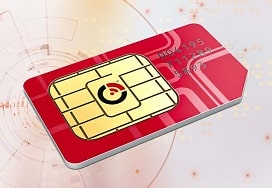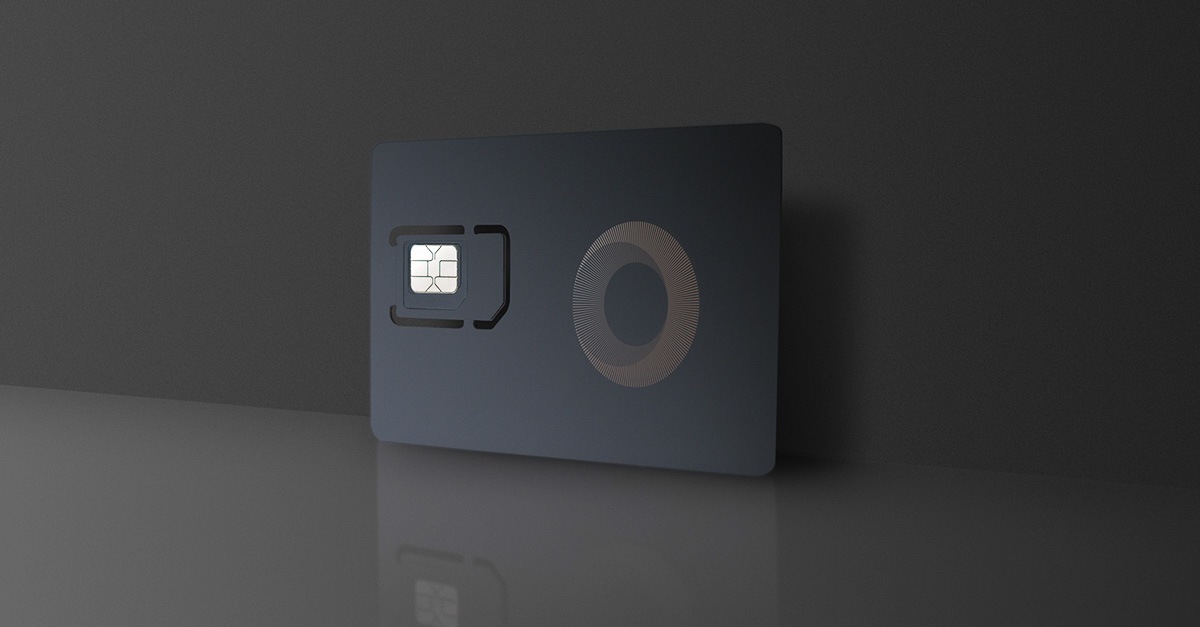Iot Global Guide to Real-Time IoT Monitoring
Iot Global Guide to Real-Time IoT Monitoring
Blog Article
It Remote Monitoring Software Open Source IoT Device Management
As city areas proceed to increase, the need for efficient and clever management of sources becomes extra critical. Smart cities current a transformational opportunity to boost the quality of life for their inhabitants by way of the mixing of expertise. At the center of this transformation lies IoT connectivity choices for smart cities, which play a pivotal role in providing the infrastructure wanted for seamless communication between devices.
IoT, or the Internet of Things, connects numerous gadgets, sensors, and networks to create a cohesive operational environment. The potential applications vary from intelligent visitors administration to smart energy grids and pollution monitoring. By leveraging these connectivity options, cities can collect real-time data to make informed choices regarding urban planning and useful resource allocation.
Various connectivity protocols function the backbone for IoT implementations. Cellular networks have gained prominence as a end result of their intensive coverage and reliability. Technologies like LTE and upcoming 5G ensure high-speed information transmission, enabling a bigger number of units to attach with out compromising speed or performance. This in depth attain is especially advantageous for smart vehicles and emergency response models.
Furthermore, Low Power Wide Area Networks (LPWAN) present distinctive advantages for smart city purposes that demand extended battery life and extended range. Protocols similar to LoRaWAN and Sigfox are well-suited for functions that don't require real-time data but prefer low-bandwidth communication. This makes them best for monitoring environmental circumstances, waste administration, and smart parking techniques.
Iot Global Open Source IoT Device Management

Bluetooth and Wi-Fi also stay necessary within the connectivity landscape. Their robustness in local communications permits for the event of smart buildings and enhanced public transportation methods. For example, smart buses can be geared up with sensors that broadcast details about seating availability and route modifications to nearby users.
In addition, Mesh networking presents one other viable choice, allowing gadgets to attach immediately with one another with out necessitating a central router. This decentralized communication mannequin enhances reliability and resilience in areas where conventional networks could probably be compromised, corresponding to during emergencies or natural disasters.
As cities experiment with completely different IoT connectivity options, data privateness and security must be addressed diligently. With quite a few units transmitting sensitive data, the risk of breaches escalates. Implementing sturdy encryption strategies and continuous monitoring protocols ensures that communication stays secure, safeguarding each the infrastructure and the private privacy of residents.
Remote Monitoring Remote Insights through IoT Monitoring
Energy effectivity performs an integral position in the implementation of IoT technologies in smart cities. Strategies for optimizing power consumption amongst linked units are essential to scale back the environmental footprint. By using energy-efficient protocols, cities can be positive that the deployed know-how remains sustainable and cost-effective in the lengthy term.

Public engagement turns into a vital factor in the successful rollout of IoT methods. Community feedback can drive the development of smarter methods tailor-made to swimsuit the specific needs of residents. Initiatives similar to workshops, public boards, and pilot programs can help gauge public sentiment and encourage participation, fostering a sense of possession amongst residents.
It Remote Monitoring Software Wireless Remote Monitoring for IoT
Collaboration among varied stakeholders, including authorities, companies, and educational establishments, is essential for creating a robust smart metropolis ecosystem. Such partnerships can drive innovation, facilitate data sharing, and provide needed funding for infrastructure projects. By aligning objectives and assets, these stakeholders can work collectively for the greater good of city communities.
Cities that spend cash on technology-driven connectivity solutions witness improved operational effectivity and enhanced citizen companies. Smart site visitors light methods, as an example, can adapt signal timings based mostly on real-time site visitors move, reducing congestion. Moreover, smart waste management techniques can optimize assortment routes, ensuring efficient service supply whereas saving costs and minimizing environmental impact.
In a rapidly evolving technological panorama, adaptability turns into essential. Cities must be prepared to integrate rising technologies into their current frameworks - It Remote Monitoring Software. Regular evaluations and updates to connectivity protocols will be sure that they stay relevant and may accommodate future improvements in IoT.
Remote Monitoring Enhancing Efficiency with IoT Monitoring
The potential of IoT connectivity options for smart cities extends past mere comfort; they bring forth a paradigm shift in how urban areas function. By reworking information into actionable insights, cities can harness the ability of information to create resilient, inclusive, and sustainable look at this site environments.
As smart city options gain traction globally, it becomes important for cities to stay dedicated to enhancing citizen engagement, security, and sustainability. Continuous research and growth will foster the cultivation of innovative connectivity solutions, thereby paving the way for smarter urbanization.
In conclusion, the arrival of varied IoT connectivity choices permits the belief of smart city visions. As cities combine these technologies, the longer term holds huge potential for fostering well-connected, efficient, and vibrant city landscapes. With the proper infrastructure and neighborhood collaboration, smart cities can lead the way toward a extra sustainable and improved high quality of life for everybody - Remote Monitoring Solutions.
Remote Iot Monitoring Solution IoT Monitoring Solutions for Businesses
- High-speed fiber optic networks present robust information transmission, enhancing communication between connected units in city environments.
- Low Power Wide Area Networks (LPWAN) facilitate long-range connectivity for smart sensors, improving energy efficiency and lengthening battery life.
- 5G networks deliver excessive bandwidth and low latency, enabling real-time data processing for purposes like site visitors management and emergency response.
- Wi-Fi 6 provides improved capability and pace, allowing numerous units to attach seamlessly in areas with dense populations, corresponding to parks and public squares.
- Bluetooth mesh technology supports communication between numerous smart units in shut proximity, helpful for native environmental monitoring and smart lighting solutions.
- Satellite connectivity can bridge coverage gaps in distant sections of a wise metropolis, ensuring continuous knowledge move for municipalities and companies.
- Zigbee and Z-Wave protocols are perfect for home automation, promoting interoperability among numerous units in smart residential areas.
- Cellular IoT options leverage current cell networks to connect units, offering a flexible and scalable infrastructure for urban purposes.
- Network slicing allows the prioritization of knowledge traffic, ensuring that crucial providers receive the necessary bandwidth during peak usage occasions.
- Edge computing allows data processing closer to the source, reducing latency and enhancing the responsiveness of smart city functions.undefinedWhat are the frequent IoT connectivity choices obtainable for smart cities?undefinedCommon connectivity choices for smart cities embody cellular networks (4G, 5G), LPWAN (Low Power Wide Area Network) corresponding to LoRa and Sigfox, Wi-Fi, Bluetooth, and Zigbee. Each possibility serves totally different use instances based mostly on range, power consumption, and data wants.
How does 5G enhance IoT connectivity in city areas?undefined5G networks supply greater bandwidth, lower latency, and greater capability compared to earlier generations. This allows real-time data processing and supports many linked gadgets, making it best for smart city applications like autonomous autos and smart grids.

What role does LPWAN play in smart city IoT solutions?undefinedLPWAN offers long-range communication with minimal energy consumption, making it suitable for IoT sensors that require extended battery life. It's notably efficient for functions like environmental monitoring and smart waste management in urban settings.
Can present networks be used for IoT connectivity in smart cities?undefinedYes, present networks like Wi-Fi and cellular may be utilized for IoT functions. However, they is probably not optimized for the precise needs find here of IoT gadgets, particularly when it comes to power consumption and system density.
Remote Monitoring Solutions What is IoT Remote Monitoring?
What are the security considerations related to IoT connectivity in smart cities?undefinedSecurity considerations embody knowledge breaches, unauthorized entry to devices, and vulnerabilities in community protocols. Implementing sturdy encryption, safe authentication, and regular software program updates is crucial to safeguarding smart metropolis infrastructures.
How do smart cities ensure dependable connectivity for IoT devices?undefinedSmart cities often use a diverse mixture of connectivity options together with redundancy measures. This ensures that even when one connection type fails, others can keep the network's reliability and efficiency.
Remote Monitoring Using Iot IoT Connectivity for Enhanced Monitoring
Are there any standards for IoT connectivity in smart cities?undefinedYes, varied standards exist for IoT connectivity, together with 3GPP for cellular technologies and IEEE standards for wireless communication. Compliance with these standards ensures interoperability and safety among completely different units and networks.
What factors must be considered when choosing an IoT connectivity option?undefinedFactors to contemplate embody range, energy necessities, data transmission charges, device density, safety features, and value. A thorough analysis of the particular use case can help decide the most appropriate connectivity choice.
How does the selection of connectivity have an effect on IoT system design?undefinedThe chosen connectivity possibility can dictate aspects of gadget design such as power consumption, size, and complexity. For occasion, devices using LPWAN might have less power, permitting for smaller battery sizes in comparability with those counting on cellular networks.
What is the way forward for IoT connectivity in smart cities?undefinedThe way ahead for IoT connectivity in smart cities is expected to be formed by developments in 5G technology, increased use of edge computing, and the mixing of AI for smarter decision-making. Enhanced connectivity will result in more efficient city administration and improved citizen providers.
Report this page